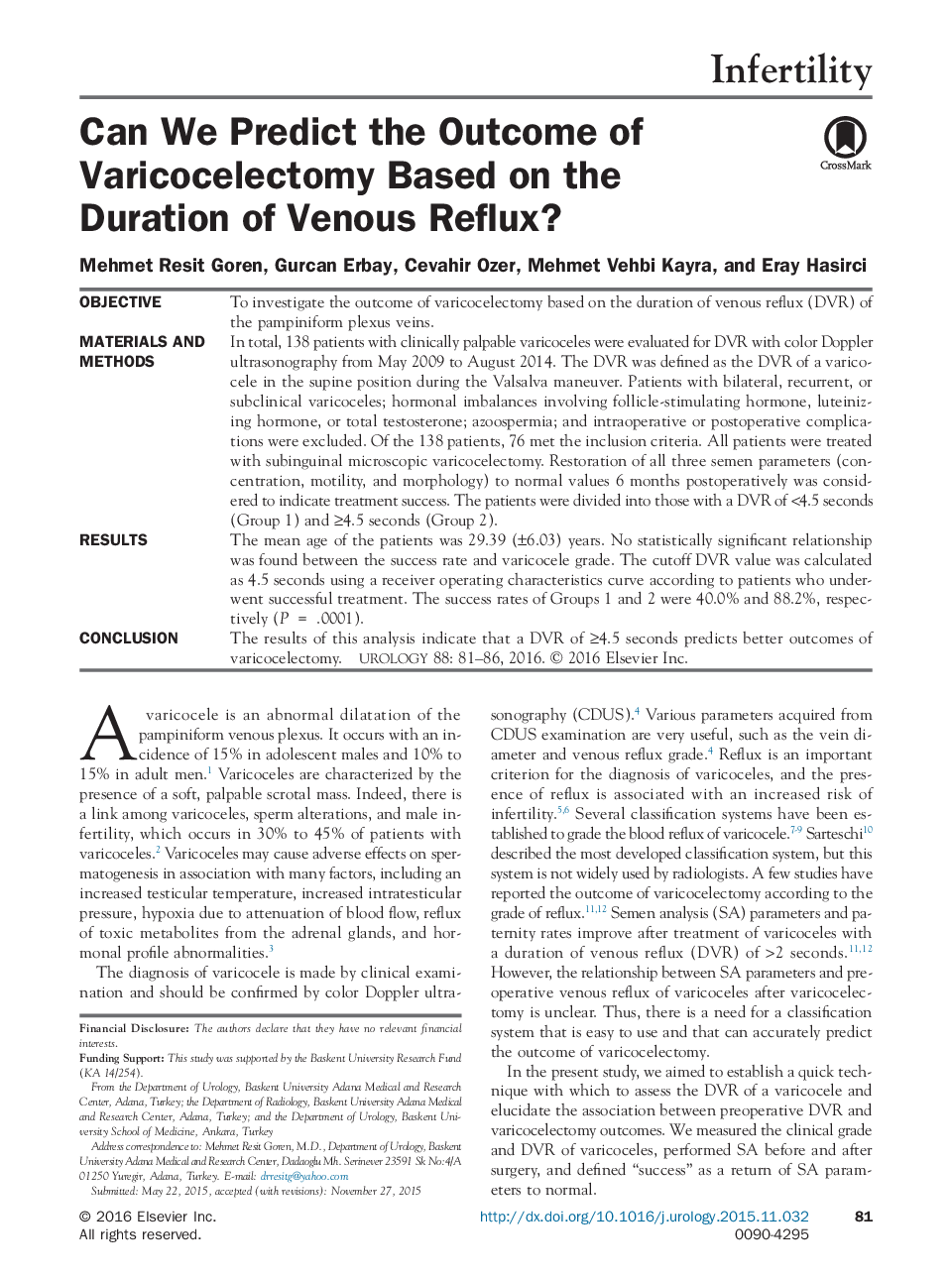| Article ID | Journal | Published Year | Pages | File Type |
|---|---|---|---|---|
| 3898327 | Urology | 2016 | 6 Pages |
ObjectiveTo investigate the outcome of varicocelectomy based on the duration of venous reflux (DVR) of the pampiniform plexus veins.Materials and MethodsIn total, 138 patients with clinically palpable varicoceles were evaluated for DVR with color Doppler ultrasonography from May 2009 to August 2014. The DVR was defined as the DVR of a varicocele in the supine position during the Valsalva maneuver. Patients with bilateral, recurrent, or subclinical varicoceles; hormonal imbalances involving follicle-stimulating hormone, luteinizing hormone, or total testosterone; azoospermia; and intraoperative or postoperative complications were excluded. Of the 138 patients, 76 met the inclusion criteria. All patients were treated with subinguinal microscopic varicocelectomy. Restoration of all three semen parameters (concentration, motility, and morphology) to normal values 6 months postoperatively was considered to indicate treatment success. The patients were divided into those with a DVR of <4.5 seconds (Group 1) and ≥4.5 seconds (Group 2).ResultsThe mean age of the patients was 29.39 (±6.03) years. No statistically significant relationship was found between the success rate and varicocele grade. The cutoff DVR value was calculated as 4.5 seconds using a receiver operating characteristics curve according to patients who underwent successful treatment. The success rates of Groups 1 and 2 were 40.0% and 88.2%, respectively (P = .0001).ConclusionThe results of this analysis indicate that a DVR of ≥4.5 seconds predicts better outcomes of varicocelectomy.
